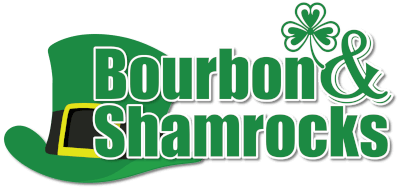Literature always could take us to new worlds, whether it be the printed pages of a classic or the screen of a contemporary novel. But have you ever thought about sipping a drink while reading your favorite book? You have entered the magical world of drinks with literary origins. Envision yourself enjoying a “Tequila Mockingbird” as you read Harper Lee’s masterpiece or a “Gin Eyre ” as you journey through Charlotte Bront’s wild moors. The scope of possibility here is as vast as the Library of Congress.
Literary Cocktails
The pairing of books and drinks is not a novel idea. Strong drinks have been the subject of stories since Homer’s Iliad, and many of Shakespeare’s characters also enjoyed the benefits (and pitfalls) of alcohol. Some of the first cocktail recipes can be found in the works of these renowned authors, with the descriptions of their ingredients weaved into the language.
When discussing the art of persuasion, it is impossible to ignore the profound impact of the ‘Lost Generation authors like Ernest Hemingway and F. Scott Fitzgerald. Both Fitzgerald and Hemingway were heavy drinkers, and their works often feature alcohol, with Fitzgerald writing about hedonistic Prohibition-era parties in “The Great Gatsby” and Hemingway writing about cocktails in “A Farewell to Arms” and “The Sun Also Rises.”
However, there’s more to the story of literature and booze than meets the eye. The reader’s perspective is crucial, too. The appropriate drink can deepen one’s involvement in a book in the same way that the perfect score can elevate a film. Picture yourself enjoying a Mint Julep as you read “The Great Gatsby,” or a crisp “White Negroni” as you delve into the murky world of espionage in “Tinker, Tailor, Soldier, Spy” by John le Carré. With every sip, you’re transported to the center of the action, tasting the very essence of the story’s characters, locales, and themes.
Therefore, whether you’re a reader or a drinker, literary-inspired cocktails provide a novel approach to enjoying your favorite stories. Who knows, anyway? Along the process, you might even come across your new favorite beverage or book.
When Alchemy and Legend Collide
How, therefore, does one take a literary masterpiece and turn it into a delicious drink? Crafting cocktails with a literary theme combines art, science, and good times. Let’s take a look at what goes into this fascinating procedure.
The first step is to decide the book or character you want to commemorate with your drink. Are they outspoken and fervent, or quiet and thoughtful? Do they remind you more of the warmth of home or the exoticism of a faraway land? Maybe Mr. Darcy from “Pride and Prejudice” by Jane Austen is the inspiration for a British gin drink that is both stiff and sweet, like his first cool demeanor and the final tenderness he exposes to his friends.
Think about the time and place in which your work is situated. A story set in the Victorian era may call for a traditional drink, whereas a futuristic dystopian thriller may require something more experimental.
The final point to make is that harmony is essential, both in terms of taste and the book’s subjects. The best cocktails, like the best stories, have a beginning, middle, and end. Its flavors should develop gradually, with no one element dominating. In the same way, your cocktail should be a reflection of the well-balanced aspects of the story you’ve chosen.
Recipes from the Cocktail Book

Now that you know the fundamentals of mixing up a literary-themed drink, let’s have a look at some classics that have long been enjoyed by readers and imbibers alike.
- Moloko Plus (A Clockwork Orange): This peculiar concoction of milk, drugs, and, one assumes, mischief comes straight from the dystopian universe of Anthony Burgess’s A Clockwork Orange. While we don’t encourage anyone to drink while driving, we do think a rich, creamy cocktail with a touch of spice for an unexpected kick is a fun take on the original.
- (From “The Great Gatsby”) Mint Julep: The Mint Julep is a symbol of the glitz and excess of the Jazz Age, which is shown in F. Scott Fitzgerald’s The Great Gatsby. All the charm and underlying bitterness of Gatsby’s opulent lifestyle are captured in this delightful blend of bourbon, mint, and sugar.
- The Hitchhiker’s Guide to the Galaxy’s Pan Galactic Gargle Blaster: This bizarre drink, which Douglas Adams called “the alcoholic equivalent of a mugging,” is not for the faint of heart. Although some of the components listed in the book—like the teeth of an Algolian Suntiger—may be difficult to get, a fun, earthbound interpretation may incorporate a potent mix of strong spirits with a citrus touch that will transport your taste buds to other galaxies.
A literary cocktail is more than simply a drink; it’s an ode to literature, its characters, and the pleasure of reading.
Making Drinks from Your Favourite Novels
Who’s up for serving up some literary cocktails? Come with me as I delve into the world of literary-themed mixed drinks. Don’t worry! It’s a fun adventure that can give your reading life a tasty new dimension, but it does involve some imagination and planning ahead of time. First, find something to motivate you; maybe a book or a certain character. This can be a much-loved book, an influential recent read, or a memorable fictional character whose qualities would make for an excellent libation.
The second step is to analyze the source material, whether it be a book or a character. Consider the book’s topics, setting, characters, and even the author’s quirks. Is the persona hot-tempered, calling for a tequila-based drink with a kick? Does the setting of the book imply any specific foods or drinks? A vodka-based beverage may be appropriate for a book set in Russia, while a rum-based drink may be more appropriate for a book about the author’s time in the Caribbean.
Third, make sure your cocktail is well-balanced. A well-balanced cocktail, like a well-told tale, is essential. The spirit acts as the base, while the complementary or enhancing ingredient is added, and the accent flavors provide contrast or depth to the whole experience. Keep in mind that you want each component to bolster the whole, not compete with it. Use a heavier spirit as an accent, not as the main spirit, if your character has a dark side but is mostly light-hearted.
A New Way to Enjoy Books While Sipping Alcoholic Beverages
While both books and cocktails are enjoyable on their own, they take on a whole other level of pleasure when shared. The next time you’re in a book club, throwing a themed party, or just relaxing by yourself, think about what drink would go best with the book you’re reading.
For instance, “The Girl with the Dragon Tattoo,” a murder mystery set in a snowy backdrop, goes great with a mug of Swedish Glögg. The icy, dark undertones of the tale are balanced by the novel’s warming spices and red wine basis.
Maybe you’re immersing yourself in the emotional anguish of “Wuthering Heights” by Emily Bront. Have a ‘Stormy Heath,’ a cocktail made with black rum (representing Heathcliff’s gloom), ginger beer (representing Catherine’s fire), and a touch of lime (representing the abrupt turns in their love story).
Drink a Salty Sailor while reading “Moby Dick”; it’s made of rum, grapefruit juice, lime, and a pinch of salt. Like Melville’s magnum opus, this drink takes you on a journey of tastes, from the smoothness of the rum to the tang of the grapefruit and the brininess of the salt.
If you want to take your reading experience to the next level, try sipping drinks while you read. It’s a wonderful approach to get to know the story’s characters and appreciate the story’s themes. Pick up your favorite book and a shaker and get ready to create some literary alchemy.
Engaging Readers in Lively Book Discussions
No one should expect book club gatherings to be dull. A simple reading group get-together may be elevated to an exciting, participatory affair with the addition of literary-inspired cocktails. Read on for a thematic twist to use at your next book club meeting.
- Select the Appropriate Book: Choose a book that can serve as a springboard for thematic analysis. Suitable novels will have either a unique setting, interesting people, or a central focus on food or drink.
- Make a Signature Drink Based on the Plot of this Novel: Share your finished product with the group and explain your thought process behind the ingredients you used and how they relate to the story of the book.
- Scene Setting: Create an atmosphere inspired by the book by decorating your room. This might range from using paper plates and napkins to creating elaborate costumes and props.
- Have Lively Debates: Sip your literary cocktails and discuss the similarities between the drink and the story. What about the beverage makes reading more enjoyable? Does it expand our understanding of the plot or the characters in any way?
The Emergence of a New Drinking Fad Inspired by Literature
A cocktail is more than just a drink in today’s drinking culture. For readers, it’s a way to become closer to the books they love while also expressing their individuality and sparking dialogue. The rising popularity of literary cocktails is indicative of the demand for increasingly nuanced and individualized alcoholic beverage services.
This fad illustrates how drinking has developed into an intentional, all-encompassing experience. People today aren’t content to merely consume a beverage; they want to know everything about it, from where the ingredients came from to why it’s so important. Literary cocktails are a way to enrich the experience of both reading and drinking by delving into the connections between the two.
Literary drinks also let readers connect through common interests and experiences. Whether you’re debating which cocktail best reflects Sherlock Holmes or arguing over how well a “Gin Eyre” captures Jane Eyre’s tenacity, these literary-inspired drinks offer a new and entertaining way to engage with books.
Cocktail Culture Around the Globe
The enchanted worlds of literature can be experienced in a whole new way with the help of literary-themed cocktails. Learning about the culture and heritage of these delectable drinks and then creating our own is a journey as enriching as it is tasty. Blending the pleasures of reading with the pleasures of a well-made drink, as we’ve seen, these cocktails can capture the spirit of cherished characters, represent vibrant locales, and even reflect deep concepts.
Put on your mixologist hat, dear reader, and set off on your journey into the wonderful world of literary drinks. The possibilities for inventiveness are as limitless as literature itself, whether one wants to recreate Elizabeth Bennett’s flaming desire in a spicy margarita or Sherlock Holmes’s enigma in a smokey whisky sour. Go ahead and experiment with this intriguing combination of mixology and mythology, and please do tell us about the literary cocktails you’ve concocted. Always keep in mind that any good book may be made much better with the help of the proper drink.
